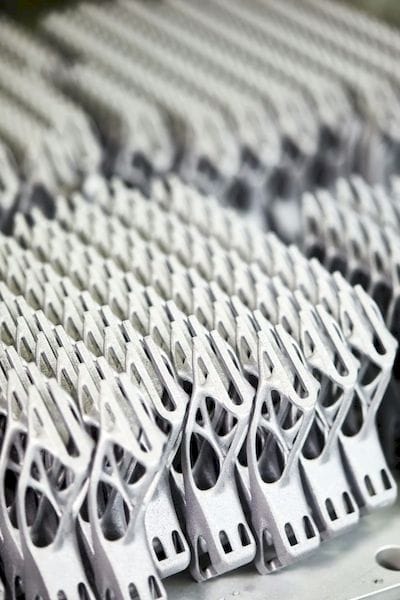![Metal 3D prints [Source: BMW]](https://fabbaloo.com/wp-content/uploads/2020/05/image-asset_img_5eb09830eddf7.jpg)
A new collaborative venture, led by BMW and including researchers, manufacturers and auto companies, is working on expanding advanced manufacturing (AM) in the automotive industry.
The “Industrialization and Digitization of Additive Manufacturing for Automotive Series Processes,” or IDAM , aims to integrate 3D printing of metal parts into existing vehicle production lines. IDAM has an ambitious target of manufacturing at least 50,000 mass-produced components a year and over 10,000 individual and spare parts in the near future.
This would enable auto companies to replace costly and time-intensive process such as mold production while meeting the demand for product customization at no additional cost.
To achieve these goals, two modular automated AM assembly lines are being installed—one at BMW’s AM center in Munich and another at the Bonn factory of GKN Powder Metallurgy, an auto parts supplier.
The production lines will perform digital design, physical manufacturing and post-processing—running through the entire manufacturing process. Modules can be customized to perform different production tasks—or can be replaced entirely—and each step in the process can be controlled separately and flexibly.
“By taking an integrated view of the automotive production line into account, the project partners plan on reducing the manual share of activities along the process chain from currently around 35 per cent to less than five per cent,” said IDAM partner Fraunhofer Institute for Laser Technology. “In addition, the unit costs of 3D-printed metal components should be more than halved.”
The initiative will benefit from interdisciplinary partnerships. Small to medium-sized enterprises design, build and connect the modules and handle tasks such as powder handling and post-processing. Research institutions take care of process control, digital twin development and quality control.
And the larger manufacturers like BMW provide the setting for the production lines to be implemented and tested in real-time and at high volume.
BMW is the main driver behind IDAM. The German automaker has been an early adopter of AM; by 2018 they had already made over one million parts using additive manufacturing technologies. Last year the company opened a $12.3 million specialized additive manufacturing campus—the same one that will host one of the IDAM production lines.
Read more at ENGINEERING.com











Aerosint and Aconity have proven out their work in multi-metal powder deposition 3D printing.